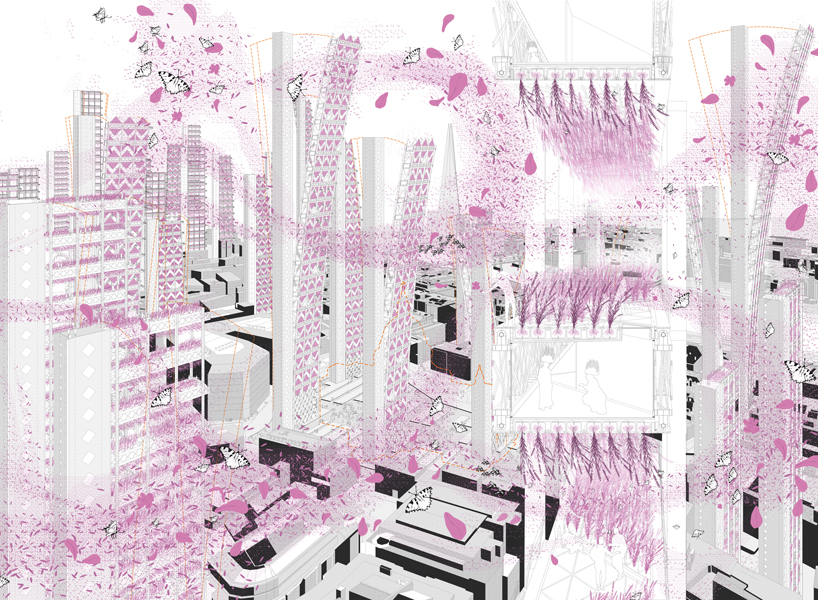
temple to wind and flowers by Viktor Z. W. from sweden
designer's own words:
This prototype is an attempt to prove real potentials of a seemingly impossible architectural proposition for an array of vertical garden towers in the City of London able to generate electric power through wind induced movement. At the heart of the system is a different perception of structural stability. Rather than attempting to resist deformation the primary structure incorporates elastic motion, like a tree bending in the wind. This approach could potentially lessen requirements for structural strength, especially in high-rise construction, as forces such as wind loads and earth movements can be transferred to the motion of the structure itself.
The transfer of kinetic energy has further benefits as it can be transformed into electricity. The load bearing structure incorporates an emerging technological application for energy harvesting known as the piezoelectric effect. It generates electricity from deformation in engineered ceramic discs. Applications for the technology exist at a smaller scale, but this architectural proposition envisages a kinetic high-rise structure functioning as an urban power station. To enable seasonal inhabitation of the kinetic structure, there is a locking mechanism of folding panels. In its elastic state, these panels are vertical and act as wind catching surfaces and a facade of gardens. When the panels are folded horizontally the structure is locked in a stable state and the panels form inhabitable rooms and public gardens.
A preliminary prototype tests the key kinetic functions of the architectural proposition. The Locking Mechanism is assembled from acid etched nickel silver, 0.921 mm thick, using slot joints. The two separate halves are held together by pivot joints. The Elastic structure generates electricity when the piezoelectric discs are subjected to mechanical stress. The steel sections restrict the elastic motion to one degree of freedom and set the base frequency for the structure. Clear bio–resin bonds the piezoelectric discs to the steel sections and protects the disc from damaging sheer stress. A Voltage meter displays the electrical output of the structure in real-time.
Project tutors: CJ Lim, Bernd Felsinger, Simon Dickens, James O’Leary and Dirk Krolikowski with technical assistance provided by Damian Eley from Arup.
City of London as an inhabited powerstation and a lavender garden 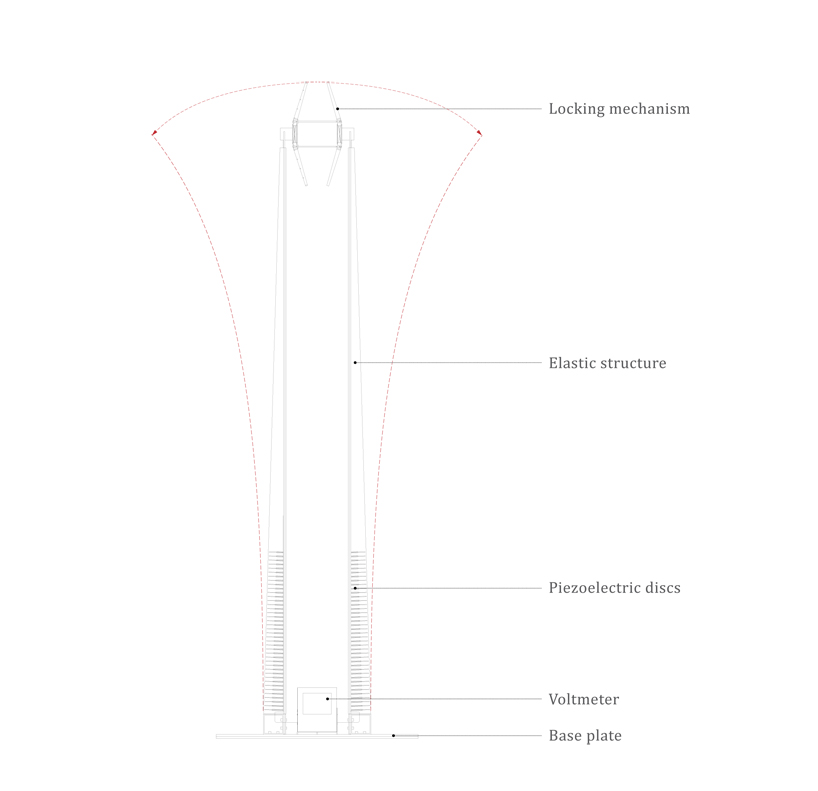 Section of the first prototype testing the system [jwplayer config=”mplayer” width=”818px” height=”600px” file=”https://static.designboom.com/wp-content/compsub/368922/2012-12-31/video_1_1356988961_bc0c09eb30e953613e691cebca4c9d6a.mp4″] video
Section of the first prototype testing the system [jwplayer config=”mplayer” width=”818px” height=”600px” file=”https://static.designboom.com/wp-content/compsub/368922/2012-12-31/video_1_1356988961_bc0c09eb30e953613e691cebca4c9d6a.mp4″] video
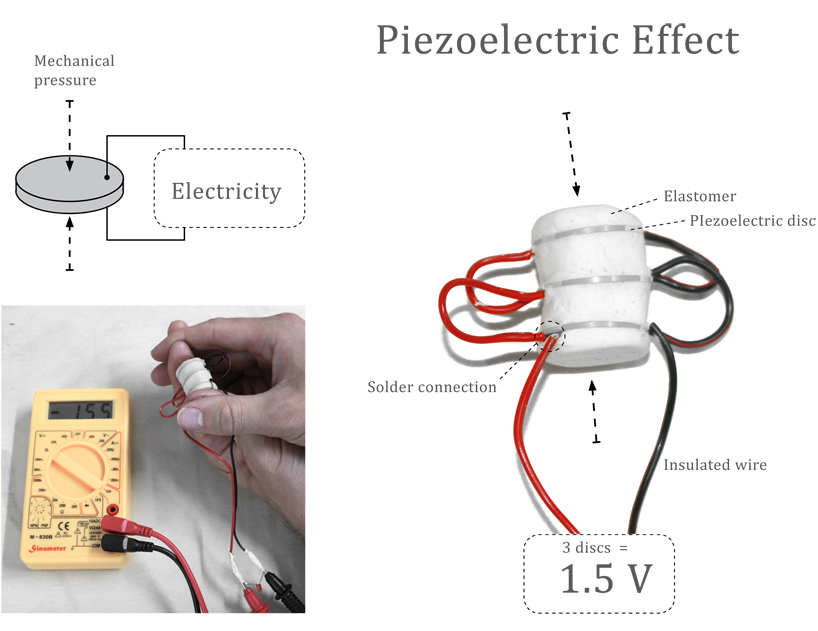 The piezoelectric effect, described and tested
The piezoelectric effect, described and tested 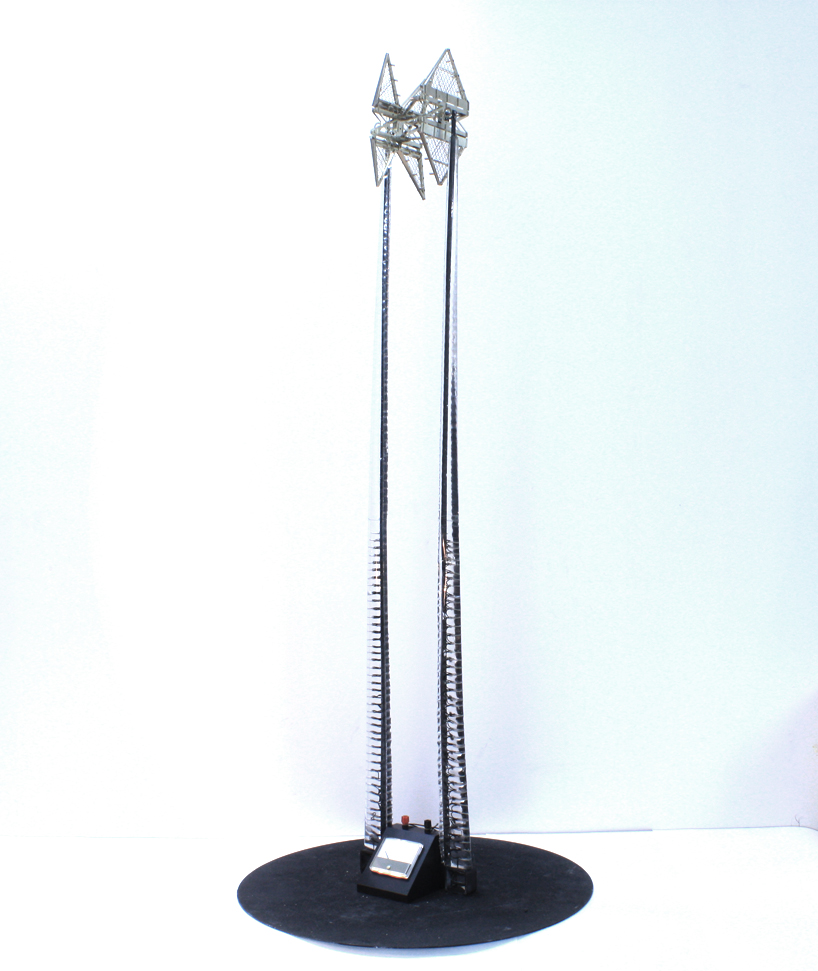 The preliminary prototype
The preliminary prototype 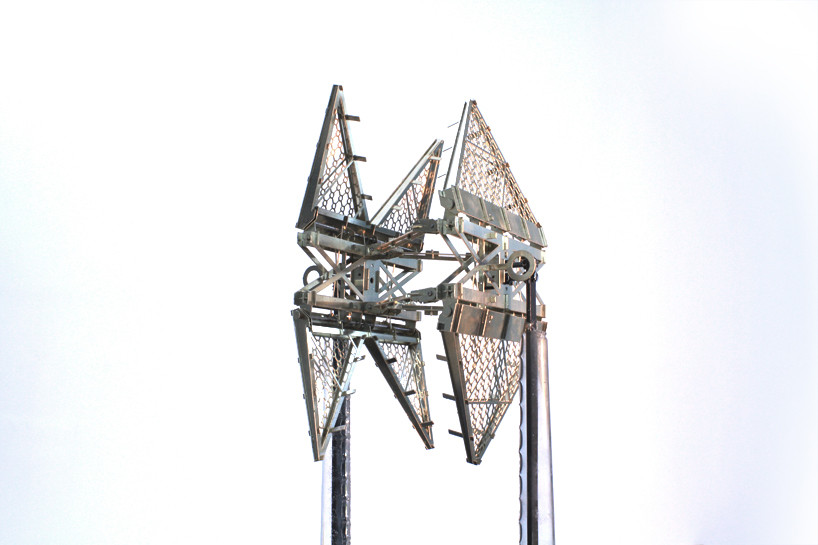 The acid etched locking mechanism
The acid etched locking mechanism 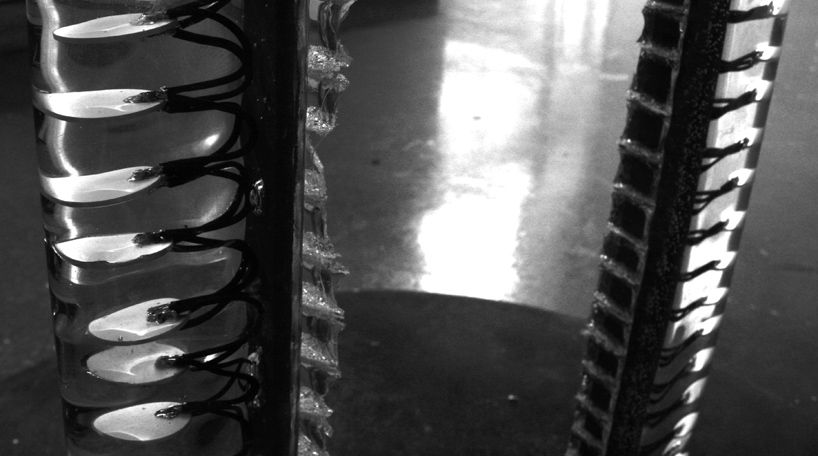 Piezoelectric discs in clear bio-resin
Piezoelectric discs in clear bio-resin